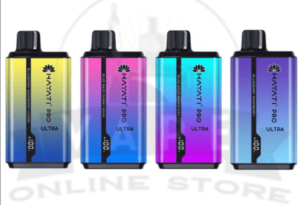Advantages of Roller Brake Testers
In vehicle maintenance and inspection, ensuring that a vehicle’s braking system is functioning correctly is paramount.
Roller brake testers (RBTs) are specialized devices that allow mechanics, fleet operators, and regulatory agencies to assess a vehicle’s braking performance accurately and efficiently.
Unlike traditional brake tests that may only provide a general assessment, roller brake testers give a detailed evaluation of a vehicle’s braking ability by measuring force, balance, and efficiency under controlled conditions.
1. Precision and Accuracy
One of the standout advantages of a roller brake tester is its ability to deliver precise and accurate measurements of a vehicle’s braking capacity.
During testing, the vehicle’s wheels are driven onto rollers that simulate road resistance, allowing for an accurate measurement of the braking force.
The RBT measures how much force each wheel applies, allowing technicians to detect imbalances, inadequate braking, or other issues in the braking system.
This accuracy is critical in heavy-duty vehicles, such as commercial trucks, buses, and trailers, where even a minor braking imbalance can cause uneven wear, reduce control, and compromise road safety.
Accurate measurements help technicians identify and address problems early, ensuring the vehicle remains roadworthy.
2. Efficient Testing Process
Roller brake testers provide a quick and efficient testing process that can be completed in minutes.
With traditional brake testing methods, technicians may need to take the vehicle for a road test, which is both time-consuming and potentially less safe.
RBTs, on the other hand, offer a controlled environment where the brake system can be thoroughly tested without leaving the garage.
For fleet operators who need to test multiple vehicles daily, this efficiency can save time and reduce downtime, which is particularly valuable in commercial industries where vehicles need to be back on the road as soon as possible.
Furthermore, because the testing process is so efficient, RBTs allow for more frequent brake checks, helping to ensure that issues are caught and fixed before they become serious.
3. Enhanced Safety and Compliance
Safety is a top priority in the automotive industry, and compliance with regulations is non-negotiable.
Roller brake testers are designed to meet industry standards for brake testing, allowing users to conduct comprehensive brake assessments that align with regulatory requirements.
This makes RBTs essential for inspections required by regulatory bodies, such as the Department of Transportation (DOT) in the United States or the Driver and Vehicle Standards Agency (DVSA) in the United Kingdom.
By identifying faults and ensuring that vehicles meet regulatory standards, RBTs enhance safety for drivers, passengers, and other road users.
The detailed reports generated by RBTs also provide a documented history of the vehicle’s brake performance, which can be invaluable in audits and inspections, providing proof that the vehicle has been properly maintained.
4. Comprehensive Brake Testing
Roller brake testers offer a level of detail and thoroughness that is difficult to achieve with other testing methods. They allow for the evaluation of several critical aspects of a vehicle’s braking system, including:
- Braking force: Measuring the force applied by each wheel helps identify if all brakes are working effectively or if any are underperforming.
- Brake balance: An imbalance in braking force between wheels can cause the vehicle to pull to one side, increasing the risk of accidents. RBTs can detect even slight imbalances.
- Brake efficiency: RBTs can assess the overall effectiveness of the braking system, giving a complete picture of its ability to bring the vehicle to a stop under load.
This thorough evaluation makes it easy to identify specific issues that might not be evident through a simple visual inspection or road test.
By pinpointing these problems, technicians can focus on targeted repairs, making the braking system safer and more efficient.
5. Cost Savings and Reduced Downtime
By using a roller brake tester, fleet operators and maintenance shops can save money in the long run.
The precision of RBTs helps prevent misdiagnosis and unnecessary repairs, ensuring that technicians only address actual issues. This reduces the cost of maintenance and prevents premature wear and tear on braking components, which can add up over time.
Additionally, the speed and efficiency of roller brake testing translate to reduced downtime for vehicles.
Instead of spending time on lengthy road tests or troubleshooting brake issues manually, technicians can quickly identify and resolve braking problems, allowing vehicles to return to service faster.
6. Ideal for All Vehicle Types
Roller brake testers are versatile and can be used for a wide range of vehicles, from small cars and motorcycles to heavy-duty trucks and buses.
Many RBTs are designed with adjustable rollers and settings, allowing them to accommodate different axle weights, tire sizes, and braking requirements.
This adaptability makes RBTs particularly valuable for mixed-use fleets that need to test various types of vehicles within the same facility.
In addition, RBTs are often integrated with software that allows operators to select specific test parameters based on the vehicle type.
This functionality ensures that each vehicle receives a tailored assessment, improving testing accuracy across different vehicle classes.
7. Digital Reporting and Record-Keeping
Many modern roller brake testers come equipped with digital systems that automatically record test results, creating detailed reports for each vehicle. This digital record-keeping offers several benefits:
- Data accuracy: Digital reports reduce the chance of human error, ensuring that results are accurate and reliable.
- Historical tracking: Maintenance shops and fleet operators can track each vehicle’s brake performance over time, helping to predict when service will be required and make informed decisions about maintenance schedules.
- Compliance documentation: Digital reports can be easily stored and retrieved for regulatory audits, simplifying compliance with safety regulations.
Digital reports also make it easier to spot trends and recurring issues, providing valuable insights that can inform broader maintenance strategies and potentially identify design flaws or systemic issues with certain vehicle models.
8. Environmentally Friendly
Roller brake testers contribute to environmental responsibility by minimizing the need for extensive road tests, which consume fuel and emit pollutants.
Instead of driving vehicles on the road for testing purposes, which may release harmful emissions, roller brake testers allow for in-garage testing in a controlled, stationary environment.
This not only saves fuel but also reduces the environmental impact of fleet maintenance.
Conclusion
Roller brake testers are an invaluable tool for vehicle maintenance facilities, fleet operators, and regulatory agencies.
They provide precision and accuracy that allow for quick and comprehensive brake assessments, helping to improve safety, reduce costs, and ensure regulatory compliance.
With digital reporting, quick testing times, and the ability to handle various vehicle types, RBTs are a wise investment that brings efficiency, reliability, and environmental benefits to vehicle maintenance operations.
For more posts, Click Here














Post Comment